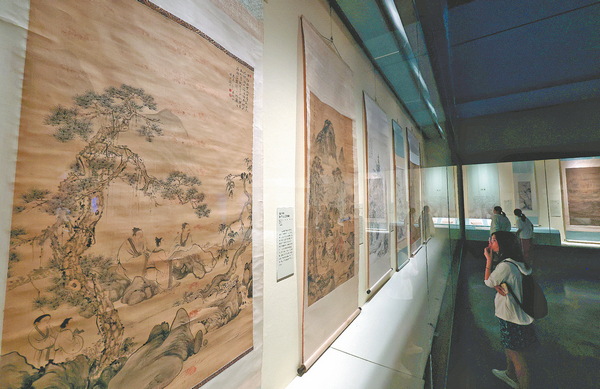

An exhibition featuring Qing Dynasty (1644-1911) artist Hua Yan, which opened at Guangdong Museum on July 10 in Guangzhou, capital of Guangdong province, allows audiences to sense and appreciate the essence and beauty of landscape paintings from the dynasty. It also offers a chance to understand the painter, a representative figure of Yangzhou School, a loose artists' group in Yangzhou, Jiangsu province.
Hua (1682-1765) was known for his flower-and-bird, figure and landscape paintings, according to Chen Xun, director of the collection management department of Guangdong Museum and the exhibition's curator.
The exhibition, Elegance, Refinement, Style: Paintings of Hua Yan, runs until Oct 7 and displays more than 70 pieces or sets of Hua's exquisite works, with precious cultural relics, accounting for more than 90 percent of the total, collected by eight units from Guangdong, Liaoning, Fujian and Zhejiang provinces and Tianjin municipality, Chen says.
Many items are being displayed to the public for the first time.
It is the first systematic and concentrated exhibition of Hua's paintings in Guangdong and also the first domestic exhibition of original works with his paintings as the theme, Chen adds.
Digital technology helps display and create an immersive experience, allowing viewers to delve into his paintings to explore the beauty of mountains and rivers, as well as the poetic and picturesque scenery in his works.
The exhibition has received support from the School of Chinese Painting, the Guangzhou Academy of Fine Arts. The cooperation between the museum and the academy and their in-depth analysis of Hua's painting techniques guides visitors into his world from multiple dimensions.
"With the help of the exhibition, visitors learn the characteristics of the painter and can better understand the ancient Chinese paintings, thus appreciate more of the creative transformation and innovative features that originated in traditional Chinese culture," Chen says.